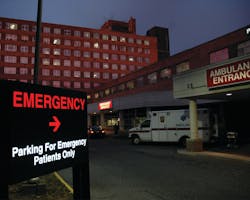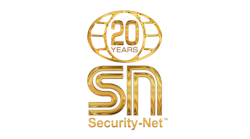Providing security services in a specialized setting like a healthcare facility poses a set of unique challenges that can make or break the success of a security project. Security directors face a myriad of challenges as they strive to protect patients, employees and visitors.
Healthcare facilities, especially hospitals, are unlike many other environments. As a 24/7 operation, hospitals need to be open enough to not prohibit the flow of patients and staff, while at the same time restrictive and secure enough to prevent unauthorized people from entering sensitive areas within the building. Hospitals house pharmaceuticals, which need to be secured around the clock; patient records, which need to be protected; and infants in a maternity ward, who need to be monitored to prevent abduction.
Security professionals in the healthcare field need to have a strong understanding of what it takes to provide the right type of security services in this setting. As a result, many security directors for healthcare facilities look to their systems integrators as a valued partner to ensure they are investing in the right technology and solutions to provide the proper protection.
Here are nine strategies that healthcare security directors can use when planning to implement new technologies, or looking to identify the right systems integrator partner for a security project. The first six apply to technology and its deployment; and the last four deal with working with a systems integrator.
1. Maintain a sterile environment.
Working in the open is not an option when installing security equipment, such as surveillance cameras in a ceiling. Because hospitals need to maintain a sterile environment, make sure the integrator has invested in containment booth equipment. As a healthcare security director, you need to ensure these containment booths are being used while an integrator installs any item that can compromise a sterile environment.
2. Invest in emergency lock-down capabilities.
Emergency lock-down capabilities are a must in the healthcare environment today. Because of active shooter incidents, and a significant increase in violence at hospitals, healthcare facilities are implementing new technology that enables them to lock down select areas or an entire facility with a single push of a button in the event of a violent incident. If your facility does not have lock-down capabilities in place, review the functionalities of your access control system to see if this feature can easily be added.
3. Use mass notification to provide emergency instructions to visitors and contractors.
A mass notification system can be a critical component of a healthcare facility’s security and safety system, especially in geographic areas where tornados and severe weather incidents are prevalent. With a mass notification system, hospitals can notify visitors and contractors in the facility who are unaware of emergency procedures regarding a weather emergency or an active shooter incident. A pre-recorded message provides the proper instructions to find safety.
4. Ensure proper placement of surveillance.
Surveillance is of growing importance in a hospital. Areas such as the Emergency Room, parking lots, and entrances need to be constantly monitored to ensure that patients are safe and employee safety is not compromised while they walk through a parking lot or garage late at night. In addition, hospitals should thoroughly consider the location of security monitors to ensure full viewing by the appropriate personnel so security officers can respond swiftly to an incident. Hospitals can also use surveillance cameras to help them monitor hallways and to ensure that someone does not mistakenly block emergency exits with trash.
5. Gain control with access control.
More and more hospitals today are turning to an enterprise-level access control systems to streamline their access control system, replace keys with access control cards and provide greater security through the facility. By replacing keys with access control credentials, healthcare security directors can improve the security of their pharmacies and data centers and gain immediate access to data of who accessed a specific area in the event of an incident. In addition, healthcare facilities are finding that there is a long-term cost savings by implementing access control for storage and supply closets, for example, eliminating the need to change locks and replace lost or stolen keys.
6. Make a long-term migration plan.
Since many healthcare facilities and hospitals do not have the financial resources to start from scratch with new security technologies — such as implementing all-new IP cameras and removing analog equipment — they need to clearly map out a technology migration strategy.
This enables healthcare facilities to leverage the benefits of their legacy systems while moving towards newer technology. For those with tight budgets, it is important to invest the time and money to outline a multi-year plan that incorporates new surveillance equipment and access control capabilities. While the funds might not be available immediately to embark on a large-scale project, tackling a project in smaller increments is possible today thanks to hybrid security solutions that enable end-users to mix analog with IP.
7. Manpower is the key.
Does your facility have a two-man rule for contractors in place? If so, make sure your integrator has additional personnel at the ready or has budgeted staff accordingly to your project to ensure that when one technician is up the ladder, another is at the base. This policy will inevitably add manpower and labor costs to your project, so make sure this requirement is spelled out in any RFPs and contract documents as well as budgets for the project.
8. Find 24/7 integration service.
Since hospitals are a 24/7 business, systems integrators providing security services to this market need to be able to provide support in the same way. When selecting a systems integrator partner, make sure your provider offers adequate emergency coverage should your security systems need it.
9. Check your integrator’s background expertise.
When selecting a security partner, ask if the integration firm is a member of the International Association for Healthcare Security & Safety (www.iahss.org) or ASIS Intl. (www.asisonline.org) Membership in these associations means that the integrator understands the challenges of this unique environment. The IAHSS is a professional organization comprised of both healthcare security directors and systems integrators and provides valuable continuing education and research as it relates to the healthcare security industry. ASIS provides specific resources relating to the healthcare security industry, but encompasses a broader base of security industry-specific information and certifications for security practitioners.
The right integration partner for specialized healthcare security work will offer that mix of vertical industry expertise, technology knowhow and design acumen that will ensure your security project meets your needs.
Joe Liguori is the president of the Board of Directors of Security-Net, a global provider of security integration services. Security-Net is comprised of 50 regional offices and 1,500 dedicated, security professionals across the U.S., Canada and abroad.



